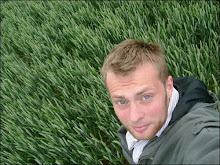You can find the first part of this feature here: http://booksadventures.blogspot.com/2010/10/patricia-wrightson-part-1-song-of.html
Clare Bradford’s 2001 Reading Race: Aboriginality in Australian Children’s Literature was one of the key academic texts to question Patricia Wrightson’s use of Aboriginal myth.
Bradford’s study was a clear-headed critique of Aussie writing for children, with lasting value. Reading it now prompts us to consider, for example, that this year’s Australian movie Tomorrow, When the War Began, adapted from the 1980s novels by John Marsden, is also implicated in the period of colonialism by harking back to the ‘frontier spirit’ in a tale of white teens fighting back against Asian invaders.
For Bradford the key question was how children’s texts try to position their readers with regard to aboriginality. From 1950s books, where Aboriginal Australians ‘appear, if at all, as a melancholy presence, doomed to extinction’, to more recent appropriations of Aboriginal myth, she diagnoses a tendency to represent Aboriginal people as an undifferentiated ‘Other’ to the white Australian readership.
Bradford questions the image of Wrightson as an advocate or defender of Aboriginality. She writes: ‘To look closely at the discourses which inform these texts is to recognise how the warm glow of Aboriginality conceals its appropriating and controlling strategies.’
In Wrightson’s later Shadows of Time, Bradford suggests, the novel’s Australian spirits are merely mapped on to Western notions of hobgoblins, mermaids and dragons.
Brian Attebery and Mark Macleod have both emphasised that Wrightson was always careful to use figures from Aboriginal superstition and myth rather than sacred religious beliefs such as creation myths, trying to focus, as Attebery writes, on fantastic creatures ‘without explicitly invoking religious ideas.’
This was an attempt to show respect by populating her fantasies with the creatures of folk tale rather than figures of religious significance, but Clare Bradford questions the legitimacy of such a sliding scale, where all supernatural tales are assigned a value – sacred or trivial – according to the writer’s judgment: ‘Cinderella and ‘How The Kangaroo Got Its Hop’ jostling in the lowest level, Adam and Eve at the top with the Rainbow Serpent … Wrightson’s use of the term ‘superstitious’ degrades the narratives that she claims for her own purposes.’
Against this, we can read Attebery: ‘No amount of care can make [Wrightson] into a tribal elder, nor can her use of Aboriginal folklore ever be fully ‘authentic’. However, she can become... a participant in the reshaping of tradition for a modern world in which authenticity is an inaccessible ideal.’
So why was Wrightson looking to participate in these traditions at all? Next time we’ll go back to the 1930s, the time of her childhood, to look at the impulse by some white Australian artists to ‘save’ a culture they saw as threatened with extinction.
For part three of this feature, click here.

No comments:
Post a Comment